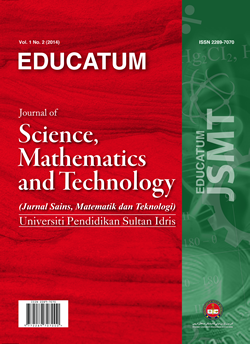Factors Influence the Residents’ Preferences on Hygienic Quality for Interior Floor Finishes
DOI:
https://doi.org/10.37134/ejsmt.vol8.2.3.2021Keywords:
preferences, interior floor finishes, living environment, selection criteria, hygienicAbstract
House, home, shelter or residential unit plays significance role for the human beings (residents) who live inside them. As interior designers, architects, planners or any other professional construction members, the residents’ preferences on interior finishes should be considered as they are very important to guide the residents to adapt with their living environment according to their needs and desires for their living environment. The degree of satisfaction on their choices of interior floor finishes is fulfilled by considering the residents’ preferences on interior floor finishes. The researcher emphasized on interior floor finishes instead of other interior elements for example wall and ceiling due to interior floor finishes give more impact to interior living environment. The aim is to find the most chosen factors that influence the hygienic quality of interior floor finishes. Hygienic is one of the selection criteria on interior floor finishes that should be given more attention especially during today’s pandemic issues. The selection criteria of hygienic are stain resistant, slip resistant, moisture resistant, dust-free, bacteria resistant, fire resistant and gas chemical. The quantitative method is implemented by using stratified random sampling on housing areas towards respondents who have renovated their interior spaces in Kinta District, Ipoh. The tool been used is SPSS Version 25 to analyze the gathered data. As a conclusion, the residents did renovation with the purpose of enhancing their living environment predominantly, their interior surrounding to fulfil their satisfaction, needs and desires. Therefore, all the construction members should deliberate the selection criteria of the common interior floor finishes.
Downloads
References
Francis D.K. Ching & Corky Binggeli. (2005). Interior Design Ilustrated (Second Edition). John Wiley & Sons, Inc. Hoboken, New Jersey.
Zhan Yang, Ai-Huayi, H., Liu, J. Y., & Zhao, X. (2016). Study of Fire Hazard of Flooring Materials on Data of Cone Calorimeter. Procedia Engineering, 135, 583–586.
Anita Terjek. (2017). Testing of Slip Resistance Properties of Ceramic Tiles. Phd Thesis. Budapest University of Technology and Economics.
Coolen & Hoekstra. (2001) Values As Determinants of Preferences for Housing Attributes. Journal of Housing and the Built Environment 16: 285–306, 2001.The Netherlands.
Mahmud Jusan. (2010). Renovation for Personalization (A Development Arm for Sustainable Housing). Penerbit UTM Press. Malaysia. ISBN 978-983-52-0739-6.
Zinas, B. Z., & Mohd Jusan, M. (2017). Choice Behaviour of Housing Attributes: Theory and measurement. Asian Journal of Environment-Behaviour Studies, 2(2), 23.
Oxford Advanced Learner’s Dictionary, 2015
Lim, K. H., Jasvindar, K., Normala, I., Ho, B. K., Yau, W. K., Mohmad, S., Sherina, M. S. (2014). Risk factors of home injury among elderly people in Malaysia. Asian Journal of Gerontology and Geriatrics, 9(1), 16–20.
Webpage of ELCOSH-Electronic Library of Construction Occupational Safety Health (retrieved on 29 October 2017, 10.10am).
Yasser M. El-Sherbiny. (2011). The Friction Of Different Floor Finish-Reducing Indoor Slips And Falls, ARPN Journal Of Engineering And Applied Sciences, Vol. 6, No. 12, December 2011, ISSN 1819-6608
U.S Environmental Protection Agency, 2013.
Corky Binggeli, (2007). Interior Design: A Survey. John Wiley & Sons, Inc. Hoboken, New Jersey.
Akadiri, P. O., Chinyio, E. A., & Olomolaiye, P. O. (2012). Design of A Sustainable Building: Conceptual Framework for Implementing Sustainability in the Building Sector. Buildings, 2(4), 126–152. https://doi.org/10.3390/buildings2020126.
Cresswell (2014). Research design: Qualitative, Quantitative and Mixed Methods Approaches (4th Ed.). Thousand Oaks: Sage Publications.
Blaine Brownell. (2008). Transmaterial 2 (A Catalog of Materials That Redefine Our Physical Environment). Priceton Architectural Press. New York.
Materia. (2009). Material Index. Architenweb BV. The Netherland. ISBN 978-90-8139261-7.
Drew Plunkett, (2010). Construction and Detailing for Interior Design (Portfolio Skills). Laurence King Publishing London. United Kingdom. ISBN13 9781856696890.
Gerhard Hausladen & Karsten Tichelmann. (2010). Interior Construction Manual (Integrated Planning Finishings and Fitting-Out, Technical Services). Edition Detail. Institut für Internationale Architektur-Dokumentation. Munich. ISBN 978-3-0346-0282-2.
Impiana, Edition 152 (April 2012); Edition 72, (August 2005).
Siân Moxon, (2012). Sustainability in Interior Design. Laurence King Publishing. London. ISBN 9781856698146
Official Website of Malaysian Timber Industry Board (retrieved on 24 August 2020, 11.05 pm).
Corky Binggeli, (2014). Materials for Interior Environments. John Wiley & Sons, Inc. Hoboken, New Jersey.
S.Z., E.-A., El-Wafa, W. M., & M.M, E.-S. (2014). Friction and Wear of Epoxy Flooring. International Journal of Scientific & Engineering Research, 5(9), 116–121.





